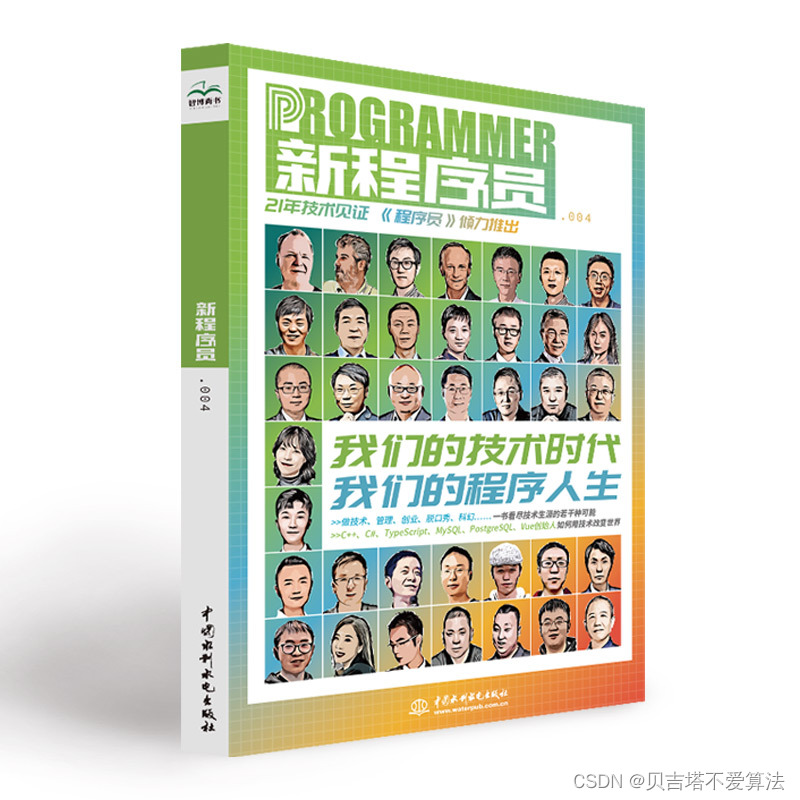StrVec 类完整实现
#include<iostream>
#include<string>
#include<memory>
#include<utility>
#include<assert.h>
using namespace std;
class StrVec
{
public:
StrVec() :elements(nullptr), first_free(nullptr), cap(nullptr) {} // alloc默认初始化
StrVec(initializer_list<string> li);
StrVec(const StrVec&);
StrVec& operator=(const StrVec&);
string& operator[](size_t n)
{
return elements[n];
}
const string& operator[](size_t n)const
{
return elements[n];
}
~StrVec();
public:
void push_back(const string&);
size_t size()const { return first_free - elements; }
size_t capacity()const { return cap - elements; }
string* begin()const { return elements; }
string* end()const { return first_free; }
string& back();
const string& back()const;
void reserve(size_t n) { if (n > capacity()) reallocate(n); }
void resize(size_t n);
void resize(size_t n, const string& s);
private:
static allocator<string> alloc; // 静态成员分配元素
// 被添加元素的函数所使用
void chk_n_alloc() { if (size() == capacity()) reallocate(); }
// 工具函数,被拷贝构造函数,赋值运算符和析构函数所使用。
pair<string*, string*> alloc_n_copy(const string*, const string*);
void free(); // 销毁元素并释放内存
void reallocate(); // 获得更多内存并拷贝已有元素
void reallocate(size_t);
string* elements; // 指向数组首元素的指针
string* first_free; // 指向数组第一个空闲元素的指针
string* cap; // 指向数组尾后位置的指针
};
inline string& StrVec::back()
{
assert(size() >= 1);
return *(end() - 1);
}
inline const string& StrVec::back()const
{
assert(size() >= 1);
return *(end() - 1);
}
inline void StrVec::resize(size_t n)
{
if (n > size())
{
//reserve(n);
//auto sz = size();
//while (sz++ != n)
// alloc.construct(first_free++, "");
while (size() < n)
push_back("");
}
else if (n < size())
{
while (size() > n)
alloc.destroy(--first_free);
}
}
inline void StrVec::resize(size_t n, const string& s)
{
if (n > size())
{
while (size() < n)
push_back(s);
}
}
inline void StrVec::reallocate(size_t sz)
{
assert(sz >= size()); // 其实没有必要,因为这个函数是私有成员函数,不会被外界调用,因此调用的时候都是合理的。
auto newbegin = alloc.allocate(sz);
auto dest = newbegin;
for (auto i = elements; i != first_free; ++i)
alloc.construct(dest++, std::move(*i));
free();
elements = newbegin;
first_free = dest;
cap = elements + sz;
}
StrVec::StrVec(const StrVec& v)
{
auto ret = alloc_n_copy(v.begin(), v.end());
elements = ret.first;
cap = first_free = ret.second;
}
StrVec::StrVec(initializer_list<string> li)
{
//size_t sz = li.end() - li.begin();
//auto begin = alloc.allocate(sz);
//auto dest = begin;
//for (auto i = li.begin(); i != li.end(); ++i)
// alloc.construct(dest++, *i);
//elements = begin;
//cap = first_free = dest;
auto sp = alloc_n_copy(li.begin(), li.end());
elements = sp.first;
cap = first_free = sp.second;
}
StrVec::~StrVec()
{
free();
}
StrVec& StrVec::operator=(const StrVec& v)
{
auto ret = alloc_n_copy(v.begin(), v.end());
free();
elements = ret.first;
cap = first_free = ret.second;
return *this;
}
void StrVec::push_back(const string& s)
{
chk_n_alloc(); // 确保有空间可以进行构造
alloc.construct(first_free++, s); // 在first_free指向的元素中构造s的副本
// 会根据参数确定用哪个构造函数来构造对象,本例中只有一个额外参数,类型为string,因此会使用string的拷贝构造函数
}
pair<string*, string*> StrVec::alloc_n_copy(const string* begin, const string* end)
{
auto first = alloc.allocate(end - begin);
return { first, uninitialized_copy(begin, end, first) }; // first指向开辟空间的首地址,second指向用本对象的内存数据构造之后的内存空间的尾地址。
}
void StrVec::free()
{
//free(3)
auto t = elements;
for_each(t, first_free, [](string& s) {alloc.destroy(&s); });
alloc.deallocate(elements, cap - elements);
// free(2)
//if (elements)
//{
// // 将已经构造的元素销毁,然后调用deallocate释放所有最初申请的空间
// for (auto p = first_free; p != elements; )
// alloc.destroy(--p);
// alloc.deallocate(elements, cap - elements);
//}
// free(1)
//auto tmp = elements;
//while (tmp != first_free)
// alloc.destroy(tmp++);
//alloc.deallocate(elements, cap - elements);
}
void StrVec::reallocate()
{
// 先开辟更大的空间,然后逐个移动。
auto newcapacity = size() ? size() * 2 : 1;
auto newdata = alloc.allocate(newcapacity);
auto dest = newdata;
auto src = elements;
for (size_t i = 0; i != size(); ++i)
alloc.construct(dest++, std::move(*src++)); //!!!!!!!!!!!!!!!!!!!!!!!!!!!!!!!!!
free();
elements = newdata;
first_free = dest;
cap = newdata + newcapacity;
}
allocator<string> StrVec::alloc;
void test_StrVec()
{
StrVec vec;
vec.push_back("hahaha");
int i = 0;
cin >> i;
string s;
while (i-- && cin >> s)
vec.push_back(s);
for (auto i = vec.begin(); i != vec.end(); ++i)
cout << *i << endl;
StrVec vec2 = vec;
vec2.push_back("zzz");
cout << vec2.back() << endl;
cout << vec.back() << endl;
}
void test_initializer()
{
StrVec v({ "11","22","33" });
cout << v.back() << endl;
}
void test_resize()
{
StrVec v;
v.resize(5, "sss");
cout << v.size() << endl;
cout << v.back() << endl;
}
int main()
{
test_resize();
return 0;
}大致介绍:此类用于模拟vector<string>。使用allocator类对象来申请空间,再用allocator类成员函数来构造元素,销毁元素,释放元素。
三种构造函数,参数为列表的以及拷贝构造函数都使用了alloc_n_copy私有成员函数。并且拷贝赋值运算符也使用了这个函数。那些公有的成员函数就不介绍了,都是一些基本实现。?
1.? 私有成员中,静态数据成员allocator<string> alloc的使用有点新颖,注意此成员可以给任意个StrVec对象申请空间,因为这个数据成员属于类,并且allocator类对象本身也有这个功能,可以无限申请空间。
2.? elements first_free cap数据成员用于指向alloc申请的内存的特定位置地址。
alloc_n_copy
pair<string*, string*> StrVec::alloc_n_copy(const string* begin, const string* end)
{
auto first = alloc.allocate(end - begin);
return { first, uninitialized_copy(begin, end, first) }; // first指向开辟空间的首地址,second指向用本对象的内存数据构造之后的内存空间的尾地址。
}?这个函数的实现可以说是这个类的最秀的地方了,接收的参数是任意一个范围的起始地址和末尾地址,作用是开辟另一块同大小的内存,并将这个范围的数据拷贝过去。
? C++ Primer源码中的注释:
? ? // allocate space to hold as many elements as are in the range
?? ?auto data = alloc.allocate(e - b);?? ?// initialize and return a pair constructed from data and
?? ?// the value returned by uninitialized_copy并且你会发现,拷贝构造,以及以initializer_list<string>为参数的构造函数,拷贝赋值运算符,都用到了alloc_n_copy。非常方便。
free()的实现
void StrVec::free()
{
//free(3)
auto t = elements;
for_each(t, first_free, [](string& s) {alloc.destroy(&s); });
alloc.deallocate(elements, cap - elements);
// free(2)
//if (elements)
//{
// // 将已经构造的元素销毁,然后调用deallocate释放所有最初申请的空间
// for (auto p = first_free; p != elements; )
// alloc.destroy(--p);
// alloc.deallocate(elements, cap - elements);
//}
// free(1)
//auto tmp = elements;
//while (tmp != first_free)
// alloc.destroy(tmp++);
//alloc.deallocate(elements, cap - elements);
}reallocate()
void StrVec::reallocate()
{
// 先开辟更大的空间,然后逐个移动。
auto newcapacity = size() ? size() * 2 : 1;
auto newdata = alloc.allocate(newcapacity);
auto dest = newdata;
auto src = elements;
for (size_t i = 0; i != size(); ++i)
alloc.construct(dest++, std::move(*src++)); //!!!!!!!!!!!!!!!!!!!!!!!!!!!!!!!!!
free();
elements = newdata;
first_free = dest;
cap = newdata + newcapacity;
}引用书中的三句话来说明这个函数:
1. 当reallocate在新内存中构造string时,它必须调用move来表示它希望使用string的移动构造函数。(string类内部已经实现了这些移动构造函数了)
2.? construct的第二个参数(即,确定使用哪个构造函数的参数)是move的返回值。调用move返回的结果会令construct使用string的移动构造函数。
3.? 由于我们使用了移动构造函数,这些string管理的内存将不会被拷贝。相反,我们构造的每个string都会从elem指向的string那里接管内存的所有权(具体细节我也不知道了,需要学习13.6节 对象移动)。
其实,这个函数也一般吧,也就是开辟一个更大的内存,然后将之前已有的元素利用std::move()在新内存中构造同样的元素。
